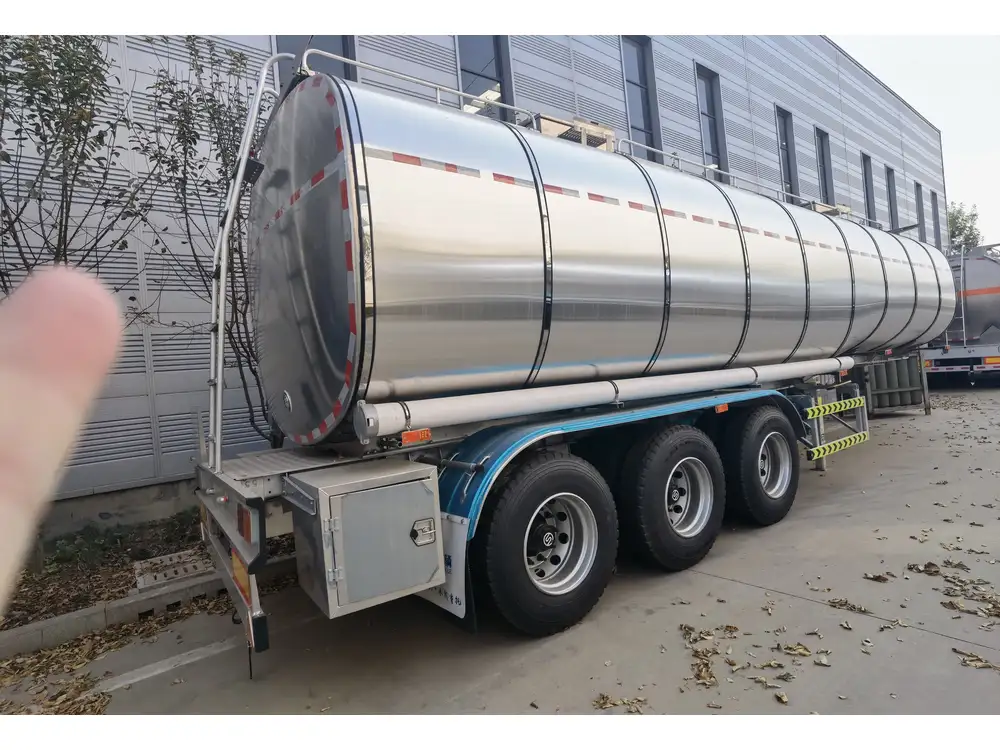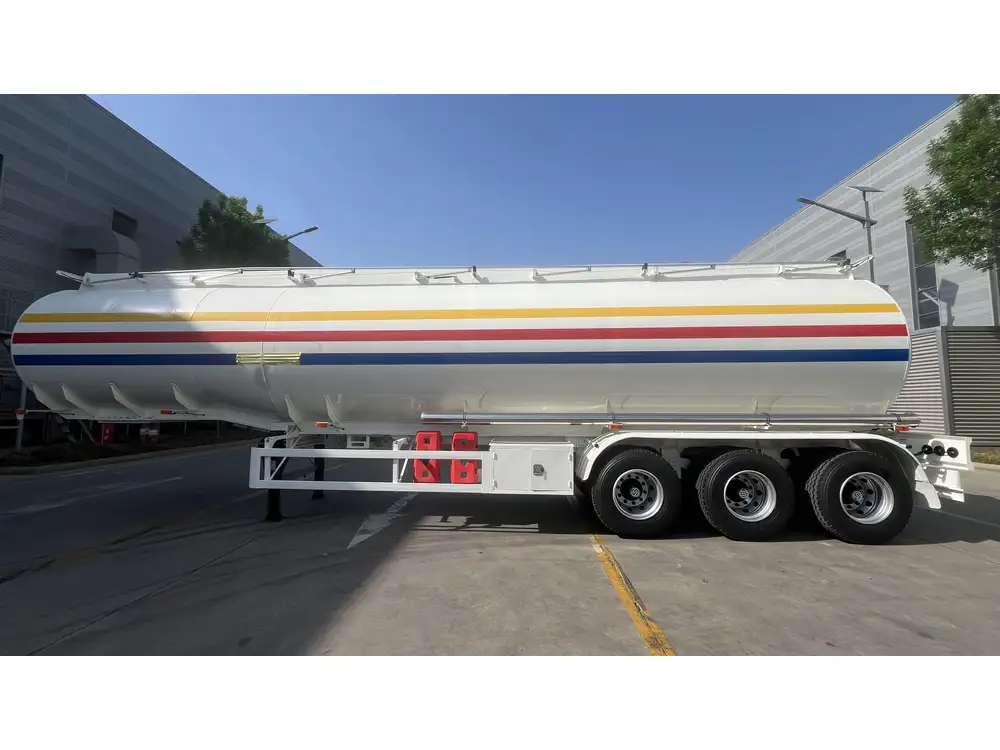When it comes to the logistics and transportation industry, understanding the capacity of a truck tanker is fundamental. The question, “How many gallons are in a truck tanker?” isn’t just a trivial inquiry; it plays a pivotal role in planning, efficiency, and cost management. By breaking down this topic, we can unravel everything from the various types of tankers to the implications of carrying different liquids.
Types of Truck Tankers
Before delving into the specifics about capacity, it’s crucial to define the various types of truck tankers we encounter in the transportation sector. Each category serves different purposes and has its unique capacities.
1. Cargo Tankers
Cargo tankers, primarily used for the transportation of dry bulk and various liquids, have different designs tailored to their specific contents. They include:
Dry Bulk Tankers: Used for transporting materials like grain, cement, or other dry goods.
- Capacity: These generally do not apply in gallons but can range from 2,000 to 30,000 designees.
Liquid Tankers: Specifically designed for carrying liquids, often segmented into subcategories which include:
Food-Grade Tankers: For dairy, juices, or other consumable liquids.
Capacity: Between 5,000 to 7,000 gallons.
Chemical Tankers: Used to transport chemicals.
Capacity: Ranges from 5,000 to 11,000 gallons depending on the chemical.

2. Refueling Tankers
These tankers are dedicated to transporting automotive fuels, such as gasoline or diesel.
- Capacity: Typically, refueling tankers have a capacity of about 8,000 to 10,000 gallons but can go up to 12,000 gallons depending on the regulations and truck specifications.
3. Tank Container Trucks
Often called ISO tanks, these versatile containers can be used for a variety of liquids, including hazardous substances.
- Capacity: Generally, ISO tank containers can hold approximately 5,000 to 6,000 gallons of liquid.
4. Specialized Tankers
Specialized tankers are designed for transporting specific types of liquids, particularly those that require temperature control or have hazardous properties.
- Reefer Tankers: Maintain low temperatures for transporting perishable items.
- Capacity: These tankers typically range from 5,000 to 10,000 gallons.
| Type of Tanker | Common Uses | Typical Capacity (Gallons) |
|---|---|---|
| Cargo Tankers | Dry bulk, chemicals, food | 5,000 – 30,000 |
| Refueling Tankers | Automotive fuels | 8,000 – 12,000 |
| Tank Container Trucks | Various liquids | 5,000 – 6,000 |
| Specialized Tankers | Hazardous substances | 5,000 – 10,000 |

How Gallons Are Measured in a Truck Tanker
The measurement of gallons in a truck tanker is often derived from the tanker’s dimensions, which include its length, diameter, and shape. Most tankers are cylindrical, and the volume can be calculated using the formula:
Volume = π × (radius²) × height
Definitions:
- π (Pi): Approximately 3.14.
- Radius: Half of the diameter of the tanker.
- Height: The vertical length of the tanker from bottom to top.
By transforming the calculated volume from cubic feet to gallons (1 cubic foot equals roughly 7.48 gallons), companies can ascertain how much liquid can be efficiently transported.

Example Calculation
- Tanker Dimensions: Let’s say a tanker is 40 feet long with a diameter of 8 feet.
- Calculate Volume:
- Radius = 4 feet (diameter of 8 feet divided by 2).
- Volume = π × (4²) × 40 = π × 16 × 40 ≈ 2010.61 cubic feet.
- Convert to Gallons:
- 2010.61 cubic feet × 7.48 gallons/cubic foot ≈ 15,023 gallons.
Factors Affecting Capacity
While one might discover general capacities for different types of tankers, several factors can impact these numbers. Understanding these factors can assist in making informed decisions:
1. Legal Regulations
Laws on road transport can dictate the maximum capacity of tankers depending on the liquid being transported. For instance, in many jurisdictions, the legal weight limits for road transport can restrict how much liquid can effectively be carried, irrespective of the tanker’s nominal capacity.

2. Load Weight Restrictions
X Symbolically priced at a maximum weight; exceeding that weight can incur fines or lead to unsafe driving conditions. As such, understanding weight ratios is paramount for logistics and transportation managers.
3. Safety Protocols
Certain liquids, particularly hazardous ones, may require tankers to carry less liquid than they are theoretically capable of transporting to allow for safety buffers and to mitigate the risk of spillage.
4. Tanker Design and Configuration
Some tankers may include compartments designed for multi-product transport, which can affect the total volume available for any one product.

Guidelines for Choosing the Right Tanker
Selecting the right tanker for a transportation job isn’t just about understanding the gallons; here are vital considerations that could impact the efficiency of operations:
Type of Liquid
Understanding the nature of the liquid is crucial. For example, food-grade liquids require specialized tankers that meet strict hygiene standards, whereas chemicals may need corrosive-resistant materials.
Regulatory Compliance
Familiarity with local, state, and federal regulations concerning tank transport will determine the needed specifications for the tanker.

Volume Needs
Assessing how much liquid needs to be transported in a single trip can help in selecting a tanker that maximizes efficiency while minimizing cost.
Route and Accessibility
Some tankers may not fit under bridges or may be too wide for certain roads. Evaluating the route is essential for effective logistics.
Cost vs. Efficiency Balance
Evaluating the operational costs against the capacity yield helps in determining the most economical choice. A smaller tanker making multiple trips may be more cost-effective than a larger one that would sit empty part-time.

Conclusion
The question of “how many gallons in a truck tanker” indeed transcends a simple figure. The nuances associated with different tanker types, their varying capacities, and the critical elements affecting real-world scenarios paint an intricate picture of logistics in this field. By understanding these factors, businesses can make informed choices that enhance both safety and efficiency in transporting goods.
Given the complexities involved in selecting the right tanker and calculating capacity, it’s not just about the gallonage; it encompasses compliance with regulations, understanding operational constraints, and prioritizing both safety and efficiency. As such, gaining a comprehensive understanding of these elements is vital for anyone involved in the transportation and logistics industry.
In the highly competitive landscape of transportation logistics, having such deep insights can drive operational excellence and create a significant advantage. Understanding the capacity and making informed choices aren’t just practical; they are strategic imperatives for success.



